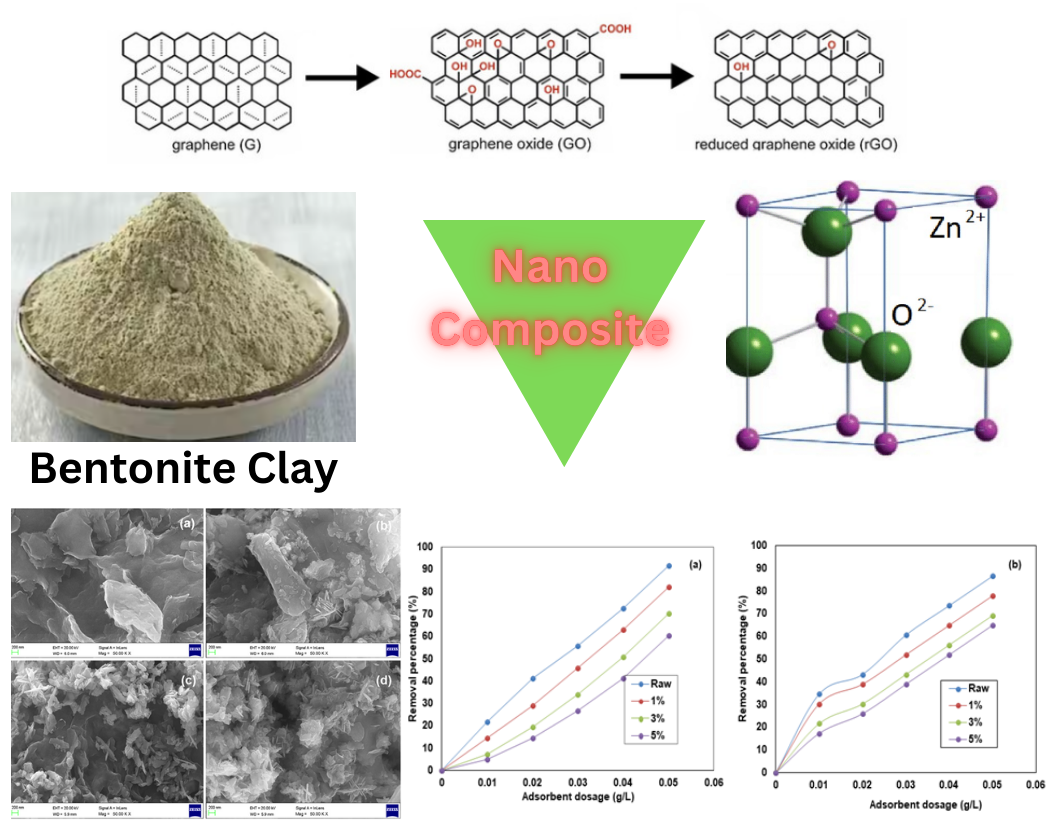
To assess the efficacy of removing heavy metals such as Cu (II) and Ni (II) ions from aqueous solution, the adsorption behaviour of a nanocomposite powder comprising of reduced Graphene Oxide (rGO), bentonite clay, and ZnO was investigated. Various analytical techniques including Fourier transform infrared spectroscopy, Field emission scanning electron microscopy, Energy-Dispersive X-ray spectroscopy, X-Ray diffraction analysis, and N2 adsorption/desorption analysis were utilized to analyse the synthesized composites. Through the batch equilibrium approach, parameters influencing adsorption behaviours, including initial metal ion concentration, pH, adsorbent dosage, and contact time, were comprehensively examined. Adsorption data were shown to have good fit to the Langmuir isotherm model and pseudo-first-order model, with high R2, low root mean square error (RMSE), low chi square (Χ2), and low standard deviation (SD) values when using the linear regression approach. For the raw sample (rGO/ bentonite clay) containing copper and nickel, equilibrium was achieved in 80 minutes, while for samples with 1% (rGO/ bentonite clay/1% ZnO), 3% (rGO/ bentonite clay/3% ZnO), and 5% (rGO/ bentonite clay/5% ZnO), equilibrium was attained within 70 minutes. Within the pH range of 2 to 12, the adsorption kinetics of copper and nickel exhibited a notable pH-dependent relationship, highlighting the pronounced influence of pH conditions on the adsorption process. Copper consistently demonstrated superior removal efficiency compared to nickel in all conducted adsorption tests, attributed to its heightened propensity for bond formation with adsorbent surfaces. The primary pathways for copper and nickel adsorption on the composites involved intermolecular interactions, cation exchange, physisorption and electrostatic interactions. The Langmuir model revealed maximum Cu (II) adsorption capacities of 312.5 mg/g, 217.39 mg/g, 161.95 mg/g, and 101.96 mg/g for raw sample, 1%, 3%, and 5% samples, respectively. Nickel (II) adsorption capacity were measured at 252.41 mg/g, 185 mg/g, 125.03 mg/g, and 96.60 mg/g for the raw sample, 1%, 3%, and 5% samples, respectively.
Total file downloads: 23